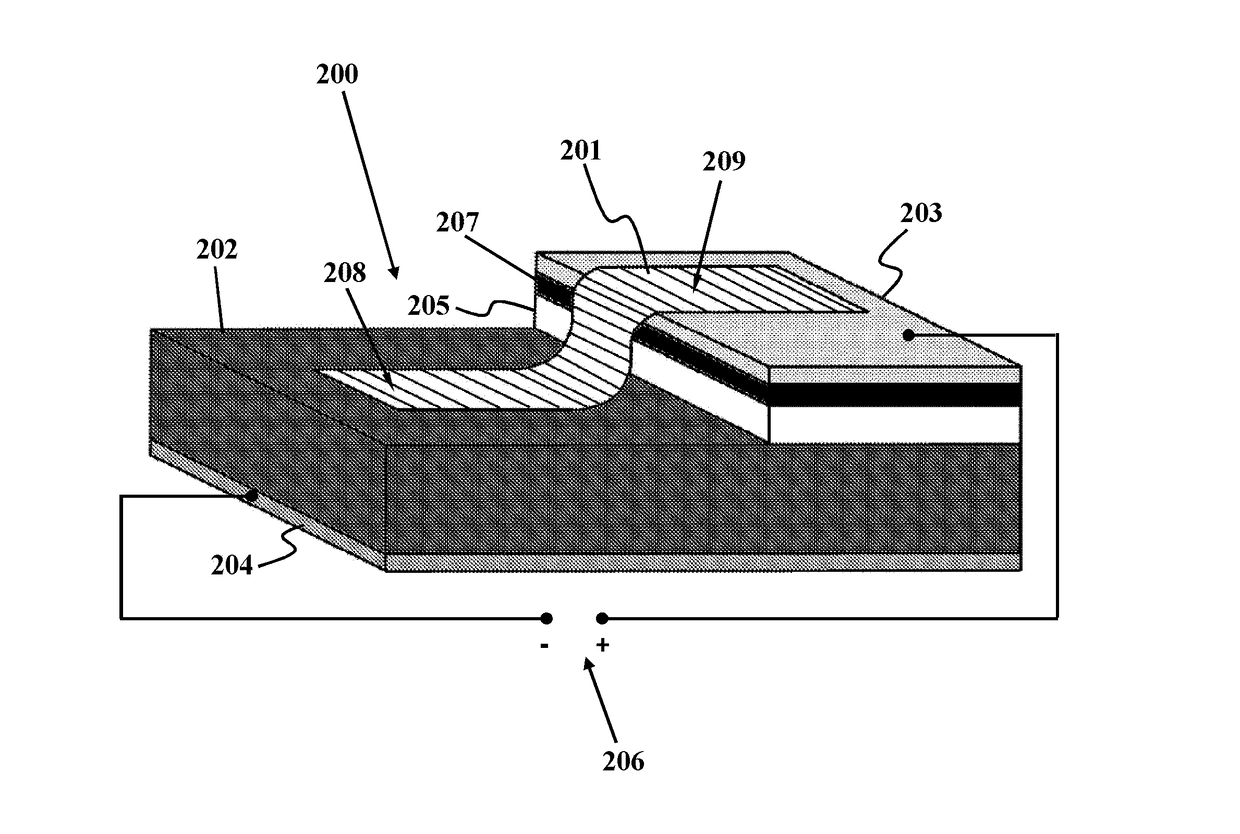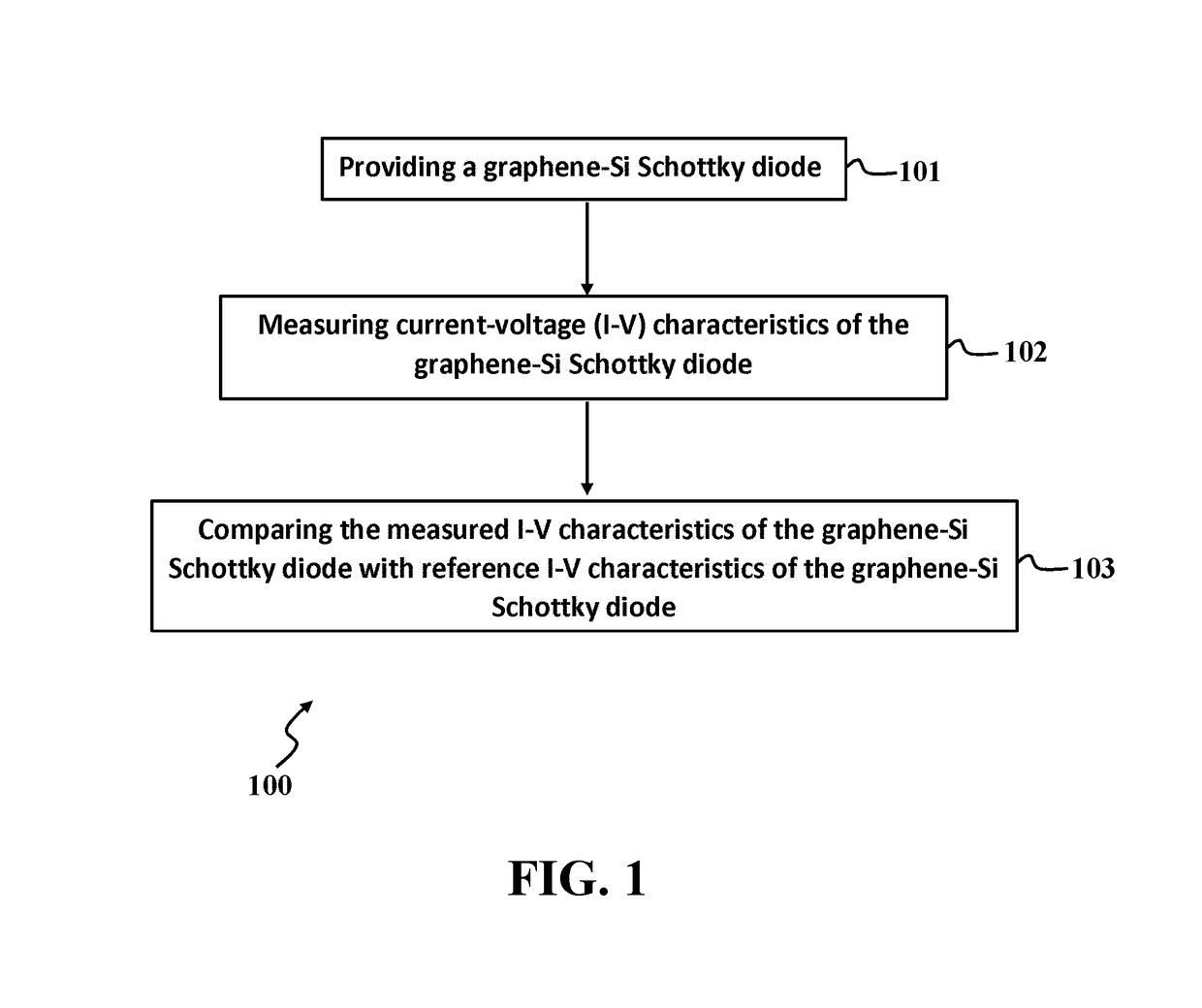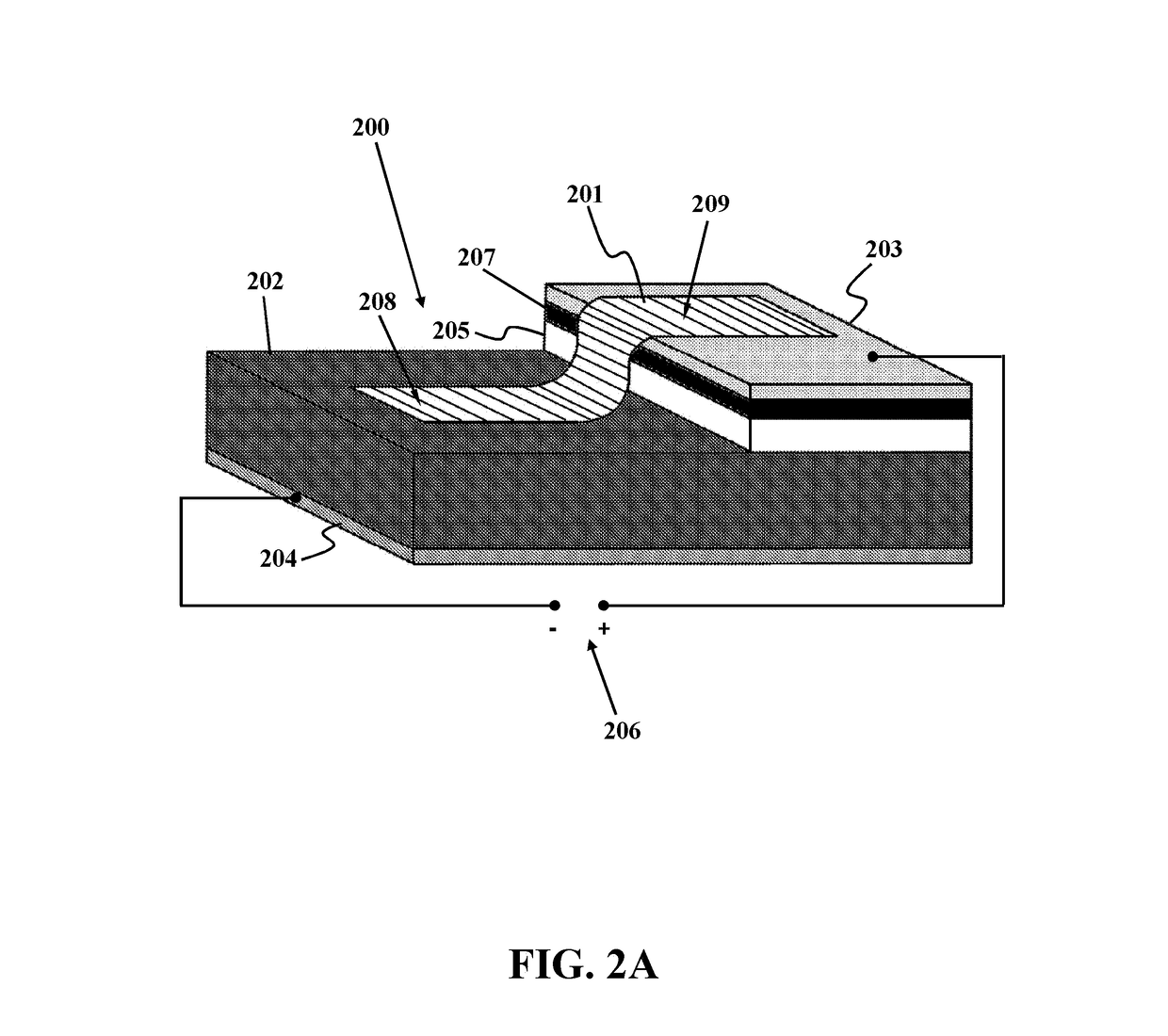Graphene-based detector for W-band and terahertz radiations
a detector and graphene technology, applied in the field of radiation detectors, can solve the problems of complex structures of devices, and low efficiency of conventional cooled bolometers
- Summary
- Abstract
- Description
- Claims
- Application Information
AI Technical Summary
Benefits of technology
Problems solved by technology
Method used
Image
Examples
example
[0047]In this example, a graphene-Si Schottky detector was fabricated, according to one implementation of the present disclosure. A p-type doped silicon substrate with a resistivity of 1-10Ω cm which is equivalent of a doping density of 1×1016 cm −3 was sliced using a wafer slicing device in a 1.2 cm×1.2 cm slice. The sliced silicon substrate was then cleaned by a cleaning process that involves subjecting the sliced silicon substrate to ultrasonication at room temperature for 15 minutes and then immersing the sliced silicon substrate in a propanol solution for 10 minutes, followed by washing the sliced silicon substrate with deionized water and then drying the sliced silicon substrate using nitrogen gas. There are SiO2 layers at both sides of the sliced silicon substrate, one of which must be removed. In order to remove, for example, the SiO2 layer on a back surface of the sliced silicon substrate, a front surface of the sliced silicon substrate may be covered by a photoresist subst...
PUM
 Login to View More
Login to View More Abstract
Description
Claims
Application Information
 Login to View More
Login to View More - R&D
- Intellectual Property
- Life Sciences
- Materials
- Tech Scout
- Unparalleled Data Quality
- Higher Quality Content
- 60% Fewer Hallucinations
Browse by: Latest US Patents, China's latest patents, Technical Efficacy Thesaurus, Application Domain, Technology Topic, Popular Technical Reports.
© 2025 PatSnap. All rights reserved.Legal|Privacy policy|Modern Slavery Act Transparency Statement|Sitemap|About US| Contact US: help@patsnap.com



